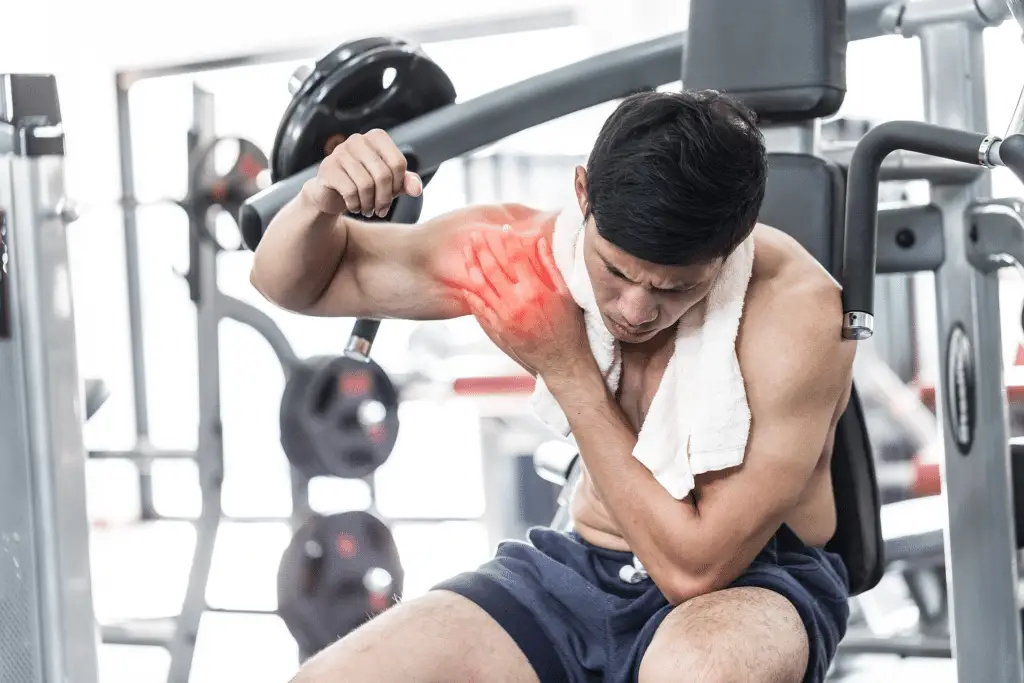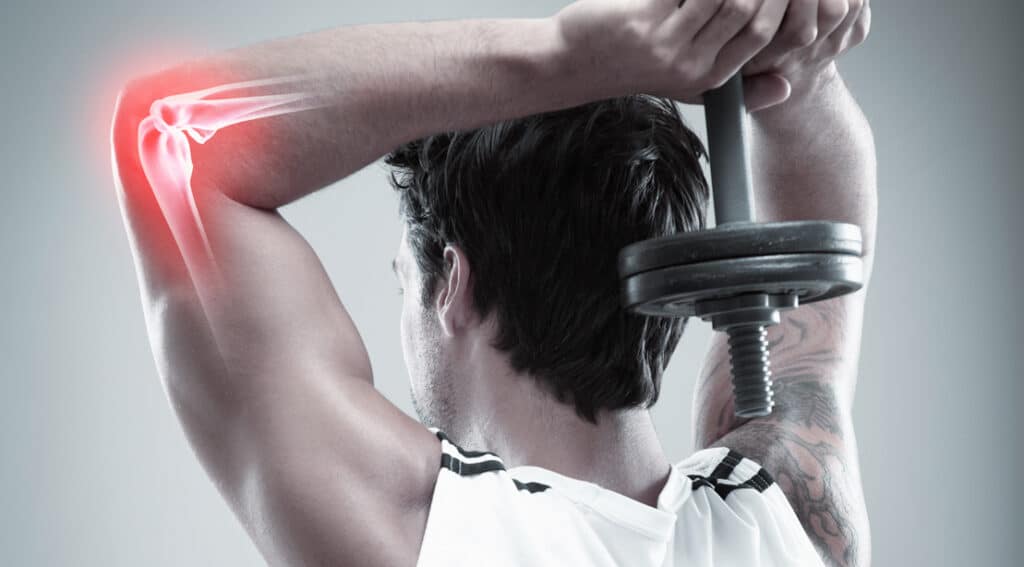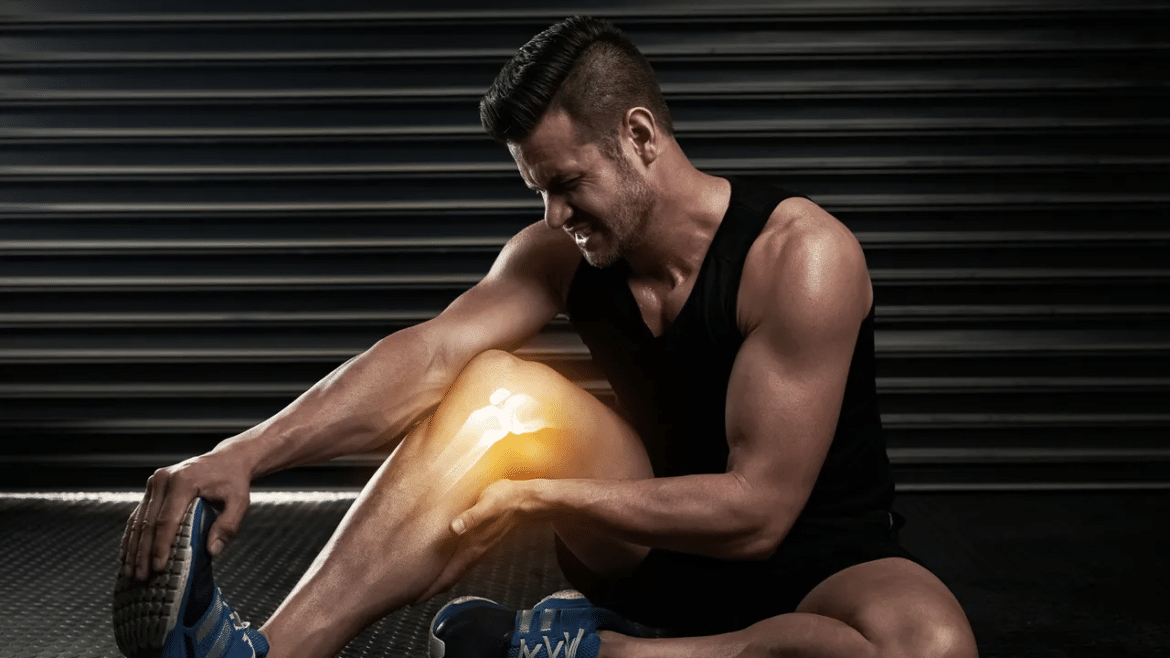Introduction
How To Relieve Joint Pain From Weightlifting: Weightlifting is a pursuit that demands dedication, discipline, and effort. For those who embrace this intense form of exercise, the rewards in terms of increased strength and muscle development can be significant. However, with great power comes the potential for joint pain – a common challenge faced by weightlifters. The repeated stress on joints during heavy lifts and strenuous workouts can lead to discomfort and sometimes even injuries. Explore effective strategies for relieving and preventing joint pain associated with weightlifting, allowing you to continue pursuing your fitness goals without unnecessary suffering.
Weightlifters often find themselves at a crossroads when confronted with joint pain, as ignoring it can lead to more significant issues, yet abandoning their passion isn’t an appealing option. The key is to strike a balance between pushing boundaries and prioritizing joint health. It will provide insights into the causes of joint pain in weightlifting, practical methods to alleviate discomfort, and essential tips to minimize the risk of future pain. By understanding and addressing the unique challenges that weightlifters face, you can continue your fitness journey with confidence, comfort, and the strength you’ve worked hard to achieve.
From strengthening your joint-supporting muscles to proper warm-up and recovery techniques, we will delve into various aspects of joint health in the context of weightlifting. Whether you’re a seasoned lifter or just starting out, this guide is designed to help you manage, relieve, and prevent joint pain, ultimately enabling you to maximize your performance while safeguarding your joint well-being.

How do you get rid of joint pain after working out?
You could apply a warm compress (a heat pack, a warm wet towel) or simply take a warm bath. Use cold therapy. Cold therapy (an ice pack, a frozen gel pack, a coolant spray) will help reduce swelling.
Rest: Give your body adequate time to recover. Rest is essential for healing. If a particular joint is painful, consider taking a break from working out those specific muscle groups. Overtraining can exacerbate joint pain.
Apply Ice or Heat: Depending on the nature of the pain, you can use ice or heat therapy. Ice can help reduce inflammation, while heat can relax and soothe the muscles and joints. Apply ice for 15-20 minutes or use a heating pad as needed.
Over-the-Counter Pain Relief: Non-prescription pain relievers like ibuprofen or acetaminophen can provide temporary relief from joint pain and reduce inflammation. Always follow the recommended dosage and consult a healthcare professional if needed.
Stretch and Mobilize: Gentle stretching and mobility exercises can help relieve joint stiffness and improve range of motion. Focus on the affected joint and the surrounding muscles. Yoga or tai chi can be helpful for overall flexibility.
Massage and Self-Myofascial Release: Massaging the affected area or using tools like foam rollers can alleviate muscle tension and improve circulation, which can help reduce joint pain.
Proper Nutrition: Ensure that your diet includes nutrients that support joint health, such as omega-3 fatty acids, collagen, and antioxidants. Maintaining a healthy weight can also reduce stress on your joints.
Hydration: Staying well-hydrated is essential for joint lubrication. Proper hydration helps maintain joint function and reduce the risk of pain.
Joint Supplements: Consult with a healthcare professional about taking supplements like glucosamine, chondroitin, or turmeric, which are believed to support joint health.
Form and Technique: Reevaluate your workout form and technique with the help of a fitness professional. Proper form can prevent joint strain and injury.
Professional Help: If your joint pain persists or is severe, consider seeking professional advice from a physical therapist, orthopedic specialist, or sports medicine doctor. They can provide a tailored treatment plan and guidance on addressing the underlying issues.
What do bodybuilders use for joint pain?
To prepare your joints for lifting, rub JointFlex into your issue areas before you hit the gym and soothe pain away once your workout is over. Mobility exercises, like using a foam roller and doing yoga, are important for bodybuilders to increase range of motion and prevent bodybuilding knee pain.
Glucosamine and Chondroitin: These are popular supplements believed to promote joint health. They can help in the maintenance and repair of cartilage, potentially reducing joint pain.
Fish Oil: Omega-3 fatty acids found in fish oil supplements have anti-inflammatory properties and may help reduce joint inflammation and pain.
Turmeric/Curcumin: Turmeric is a natural anti-inflammatory spice that can be taken as a supplement. It may help reduce joint pain and inflammation.
Collagen Supplements: Collagen is a protein found in connective tissues, and it’s often used to support joint and skin health. Collagen supplements may help with joint pain and stiffness.
Anti-Inflammatory Medications: Non-steroidal anti-inflammatory drugs (NSAIDs) like ibuprofen or naproxen can provide temporary relief from joint pain. However, these should be used with caution and under the guidance of a healthcare professional, as they can have side effects with prolonged use.
Topical Analgesics: Some bodybuilders use topical analgesic creams or gels that contain ingredients like menthol or capsaicin to provide localized relief from joint pain.
Physical Therapy: A physical therapist can provide exercises and techniques to improve joint mobility, strength, and overall function. This can be especially helpful for addressing the underlying causes of joint pain.
Rest and Recovery: Giving the affected joints ample time to rest and recover is crucial. Overtraining can exacerbate joint pain, so scheduling rest days is important.
Proper Warm-Up and Cool-Down: Bodybuilders should prioritize thorough warm-up and cool-down routines to prepare the muscles and joints for the workout and aid in recovery afterward.
Correct Technique and Form: Ensuring proper exercise form is essential to prevent joint strain and injury. A coach or trainer can help with this.
Hydration: Staying well-hydrated is essential for joint health, as dehydration can lead to increased joint stiffness and discomfort.
Should I workout if my joints are sore?
“Continuing to put pressure on a joint when it’s especially sore could contribute to joint damage, so it’s best to ease up for a while,” says physical therapist Richard Kassler, supervisor at the Orthopaedic and Sports Therapy Center at New York University Hospital for Joint Diseases, in New York City.
Mild Soreness: If you’re experiencing mild, temporary soreness, it’s often safe to engage in a workout. Gentle exercise can even help alleviate some soreness by increasing blood flow and promoting joint mobility. However, it’s essential to listen to your body and avoid overexertion.
Chronic or Severe Soreness: If your joint soreness is chronic or severe, it’s generally best to rest and allow your body time to recover. Exercising with significant joint pain can lead to further injury and may worsen the condition. Consult a healthcare professional if the soreness persists.
Localized Soreness: If the soreness is isolated to a specific joint, consider modifying your workout to avoid putting excessive strain on that joint. For example, if your knee is sore, you might choose exercises that don’t stress the knees, such as swimming or upper body workouts.
Generalized Soreness: If multiple joints are sore or if you’re experiencing soreness throughout your body, it might be a sign of overtraining or inadequate recovery. In such cases, it’s wise to take a break from strenuous exercise and focus on rest and recovery.
Consult a Healthcare Professional: If your joint soreness is persistent, worsening, or if you suspect an underlying medical condition, consult a healthcare provider or orthopedic specialist. They can provide a diagnosis and recommend appropriate treatments or modifications to your exercise routine.
Modify Your Workout: Consider lower-impact exercises that are easier on the joints, such as swimming, cycling, or yoga. Also, focus on strength and flexibility exercises that can improve joint health over time.
Listen to Your Body: Pay attention to how your body responds during and after a workout. If the soreness worsens or changes during exercise, it’s a sign to stop or modify your routine.
Rest and Recovery: Adequate rest, sleep, and proper nutrition are essential for recovery. Give your body the time it needs to repair and rebuild.
Do weightlifters need joint supplements?
From heavy weight to improper technique, the risk for injuring joints and connective tissue via weight training is high. One of the best ways you can protect your body is to supplement it with joint support.
Age: Joint health tends to decline with age. Older weightlifters may find joint supplements more beneficial, as they can help maintain joint mobility and reduce the risk of age-related joint issues.
Training Intensity: Weightlifters who engage in high-intensity and heavy lifting workouts may experience more stress on their joints. Joint supplements can provide support by helping to maintain and repair cartilage.
Diet: A well-balanced diet rich in nutrients like omega-3 fatty acids, collagen, and antioxidants can contribute to joint health. Weightlifters who already have these nutrients in their diet may not need additional supplements.
Existing Joint Issues: If a weightlifter has a history of joint problems or experiences joint pain, supplements like glucosamine, chondroitin, or fish oil may be considered to help manage symptoms and support joint health.
Professional Advice: It’s advisable to consult with a healthcare provider or a sports nutritionist to determine if joint supplements are necessary. They can assess your specific needs and recommend appropriate supplements if warranted.
Quality Matters: If you decide to take joint supplements, ensure you choose high-quality products from reputable brands. The efficacy of supplements can vary, so it’s essential to select ones with proven quality and effectiveness.
Alternative Approaches: Some weightlifters may prefer non-supplement approaches to support joint health, such as incorporating mobility exercises, warm-up and cool-down routines, and proper form and technique to prevent joint strain and injury.
How long does joint pain take to heal?
You can take action at home to help your muscles and joints get better. You should feel better in 1 to 2 weeks, but it can take 3 months or more to heal completely. Follow-up care is a key part of your treatment and safety.
Acute Injuries: If joint pain is the result of an acute injury, such as a sprain or strain, the healing process may take a few weeks to a few months. Rest, ice, compression, and elevation (RICE) can help speed up recovery. Physical therapy may also be beneficial in some cases.
Chronic Conditions: Chronic joint pain caused by conditions like osteoarthritis or rheumatoid arthritis may require ongoing management rather than complete healing. Treatment plans, including medication, physical therapy, and lifestyle modifications, can help manage symptoms and improve joint function.
Overuse or Tendonitis: Joint pain due to overuse or conditions like tendonitis can take several weeks to months to heal. Rest and modified activity are essential for recovery. Physical therapy or exercises that strengthen the muscles around the joint can also be beneficial.
Surgery: In cases where joint pain is severe and unresponsive to conservative treatments, surgery may be necessary. The recovery time after joint surgery varies depending on the type of procedure but can range from a few weeks to several months.
Individual Factors: The healing process can be influenced by individual factors, such as age, overall health, and adherence to treatment recommendations. Younger individuals tend to heal more quickly than older individuals, and those who follow their treatment plans are likely to experience faster recovery.
Lifestyle and Preventive Measures: Engaging in activities that support joint health, such as maintaining a healthy weight, staying active, and avoiding repetitive motions that strain the joints, can help prevent future joint pain.
Can joint pain be cured permanently?
Symptoms may include pain, stiffness, swelling, warmth, or redness in 1 or more joints. There is no cure for arthritis. The treatment goal is to limit pain and inflammation and preserve joint function. Treatment options include medicines, weight reduction, exercise, and surgery.
Chronic Conditions: Joint pain caused by chronic conditions like osteoarthritis, rheumatoid arthritis, or autoimmune diseases may not be completely curable. However, it can be managed effectively with a combination of medications, physical therapy, lifestyle modifications, and, in some cases, surgical interventions. The goal in such cases is to reduce pain, slow down joint damage, and improve overall joint function.
Overuse or Repetitive Strain: Joint pain due to overuse or repetitive strain can often be relieved with rest, physical therapy, and modifications to activities. Once the underlying cause is addressed, the pain can go away, but it may return if the same overuse patterns continue.
Age-Related Changes: Some joint pain is a result of natural age-related changes in the joints, such as cartilage degeneration. While these changes may not be reversible, the pain and functional limitations can often be managed effectively through various treatments.
Surgical Interventions: In some cases, joint pain may require surgical procedures, such as joint replacement or arthroscopy, to achieve long-term pain relief and improved joint function.
Why do weightlifters take creatine?
Many amateur and professional athletes take creatine supplements to aid their workout routines and improve their recovery. Creatine creates “quick burst” energy and increased strength, which improves your performance without affecting your ability to exercise for longer periods (aerobic endurance).
Increased Muscle Strength: Creatine supplementation is known to enhance muscle strength and power, which can be particularly beneficial for weightlifters aiming to lift heavier weights and improve their performance during resistance training.
Improved Muscle Endurance: Creatine can help increase the capacity of muscles to perform repeated, high-intensity efforts. This can result in weightlifters being able to do more sets or repetitions during a workout, potentially leading to greater muscle gains.
Enhanced Muscle Recovery: Some research suggests that creatine supplementation may reduce muscle cell damage and inflammation following intense exercise. This can contribute to faster muscle recovery and reduced soreness, allowing weightlifters to train more frequently.
Increased Muscle Volume: Creatine can lead to intramuscular water retention, which increases muscle cell volume. This is often referred to as “water weight” but can give muscles a fuller, more “pumped” appearance. This temporary effect can be desirable for bodybuilders and weightlifters, particularly when they want to look their best for a competition or event.
Improved High-Intensity Performance: Weightlifters often engage in short bursts of high-intensity effort, and creatine is most effective in these types of activities. It can help provide the energy needed for maximal lifts and explosive movements, such as the snatch and clean and jerk.
Elevated ATP Production: Creatine supplementation can increase adenosine triphosphate (ATP) production in muscles, the primary energy source for high-intensity, short-duration activities. This can lead to enhanced workout performance.
Adaptation to Training: Creatine may help athletes and weightlifters adapt more quickly to training, meaning they can make progress more efficiently.
Why do my joints hurt after weightlifting?
Too Much Weight
You may feel tempted to show off how much you can lift, but if you take on more than your body can handle, you’ll be putting excessive pressure on your muscles and joints, causing them to hurt after. You can even end up pulling or tearing muscles as a result.
Overuse or Strain: Weightlifting can put significant stress on the joints, particularly if you’re lifting heavy weights or performing repetitive movements. Overuse or improper form can lead to joint strain and, subsequently, pain.
Muscle Imbalances: Weak or imbalanced muscles can lead to improper joint alignment during weightlifting, increasing the risk of joint pain. Ensuring balanced muscle development through a well-rounded strength training program can help alleviate this issue.
Poor Lifting Technique: Incorrect lifting technique can place excessive stress on the joints. Ensuring proper form and technique, which often involves consulting with a qualified trainer, can minimize the risk of joint pain.
Pre Existing Joint Conditions: If you have a history of joint issues or conditions, such as arthritis or previous injuries, weightlifting can exacerbate joint pain. It’s important to manage these conditions and adapt your workouts accordingly.
Excessive Weight or Volume: Lifting weights that are too heavy or performing too many repetitions can overload the joints, leading to pain and potential injury. Gradually increasing the intensity and weight of your workouts can help prevent this.
Inadequate Recovery: Proper rest and recovery are essential for repairing muscle and joint tissue. Insufficient recovery time can lead to increased joint discomfort.
Dehydration: Inadequate hydration can affect joint lubrication and lead to joint stiffness and pain. Staying well-hydrated is essential for overall joint health.
Inflammation: Intense workouts can lead to inflammation in the joints. This can be managed through proper post-workout nutrition and potentially anti-inflammatory strategies.

Conclusion
Addressing and relieving joint pain from weightlifting is essential not only for your immediate comfort but also for the longevity of your fitness journey. By implementing the strategies discussed in this guide, you can significantly reduce the risk of joint discomfort and take proactive steps to alleviate it when it does occur. That proper warm-up, cool-down, and mobility exercises can go a long way in preventing joint issues in the first place. Maintaining good form, gradually increasing the intensity of your workouts, and listening to your body’s signals are crucial aspects of joint pain prevention.
That rest and recovery are integral components of your weightlifting routine is essential. Overtraining and pushing through pain can lead to more significant injuries and prolonged discomfort. Embrace rest days, prioritize sleep, and consider incorporating low-impact activities or stretching routines to promote joint health.
Seeking professional guidance, such as consultation with a physical therapist or sports medicine specialist, can provide tailored solutions and a deeper understanding of your unique joint-related issues. In the pursuit of your fitness goals, remember that joint health is not an area to overlook. By taking a holistic approach to your weightlifting routine, focusing on both strength gains and joint preservation, you can enjoy a balanced, sustainable, and fulfilling fitness journey.


1 comment
Thank you for your sharing. I am worried that I lack creative ideas. It is your article that makes me full of hope. Thank you. But, I have a question, can you help me?